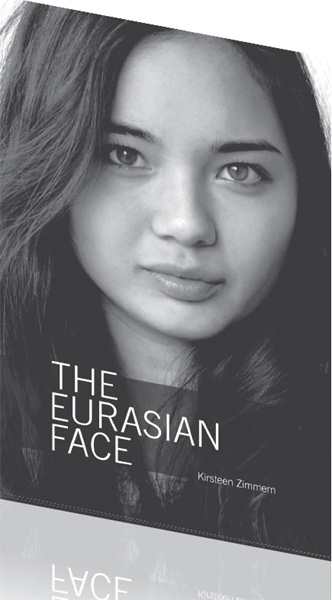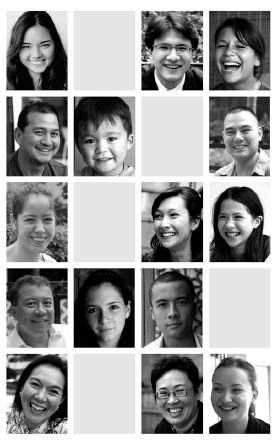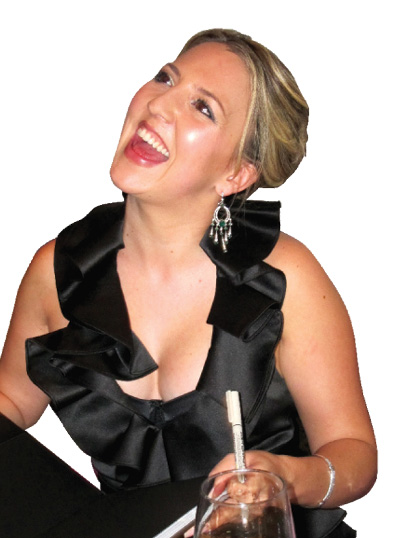Facing two worlds
Updated: 2011-01-26 07:04
By Kane Wu(HK Edition)
|
|||||||||
|
Kirsteen Zimmern at the launch party for her book. Photos Provided by Kirsteen Zimmern |

The time was that people of mixed race were treated as "outsiders" in Hong Kong - even though they might have been born here. But all that's changed as mixed marriages have become common and today it's even fashionable to be Eurasian. Kane Wu reports.
Kirsteen Zimmern would look like any other Caucasian expat in the city, one of the people who probably work in the Central Business District by day and hang out in Lan Kwai Fong at night. The stereotype vanishes as soon as she starts speaking Cantonese. The fluency and the precise pronunciation render a second thought, "Is she really?"
"Then people will ask, where are you from, where are your parents from, how do you feel, all those kinds of things," says Zimmern, a 31-year-old Eurasian who grew up in Tong Yan Sun Chuen in Yuen Long, with her Chinese father, Scottish mother and her father's Chinese family. Taking after her mother in looks more than her father, she can never satisfy people with the simple answer "I'm from Hong Kong".
"The next question is invariably, 'But where are you from?'" Zimmern says. She can spend half an hour trying to explain her mixed identity, only to elicit the comment "But you don't look Chinese!"
Zimmern is but one of the tens of thousands of Eurasians living in the city. As part of Hong Kong's colonial legacy, this mixed race have transformed from the unaccepted minority to a prominent population group among the city's kaleidoscope demographics.
Fascinated by her own appearance and mixed cultural roots from both the West and the East, Zimmern started a project three years ago to portray the lives of Eurasians here. It took three years before the barrister and part-time photographer completed her interviews and photographs in preparation for her book The Eurasian Face, which came out in the winter of 2010.
The book features first-person stories of 70 Eurasians of different racial mixes and from different age groups. Their experiences, Zimmern tells China Daily, reflect a "real attitude change" over the years from society.
Life could be difficult for a Eurasian in the 50s and 60s, says Karen Combes, one of the interviewees who was born in the 1950s when marriages between Caucasians and Chinese were just starting to become common. To some extent, society still disapproved.
Combes's English father wasn't concerned about what others thought when he married her Chinese mother. However, she recalls, her grandparents, who had been living in Australia for decades and were open-minded for their generation, were still uncomfortable with it.
Combes's life at school didn't go smoothly either. As the majority of their schoolmates at the Island school of the English Schools Foundation (ESF) at Kennedy Town were either Chinese or Caucasians, the minority Eurasians became the target of derisive comments from both groups. The Chinese students called them "jaap jung" - a derogatory term for mixed race, while the Caucasians would sometimes refer to them as "chink", a term they used to insult Chinese. "I had the feeling that they didn't dislike us but they didn't appreciate us because we were not one way or the other," Combes says.

"It was definitely more segregated in clubs," Combes, the regional catering manager for Cathay Pacific recalls. There was the time she was kicked out by a well-known local club during her youth. The club had a "no Chinese" policy in those days. "It didn't bother me because of my personality perhaps, but I know it bothered some of my peers," Combes says. "I got the impression that some of them felt they wanted to be more Western. They probably weren't that comfortable with being half Chinese and half other."
Unlike Combes, Rachael Nissim, another interviewee in the book who was born in the 1970s, never had such unfriendly encounters during her childhood in Hong Kong. The 33-year-old fashion company director grew up on Caldecot Road with other expats before moving to Kau To Shan, a principally Chinese neighborhood, when she was eight. The young woman who describes herself as 1/4 English, 1/2 Chinese and 1/4 Sephardic Jew went through the same ESF schooling system as Combes, and was a member of the Kowloon Cricket Club.
"We were always so physically active and socialized a lot with all sorts of age groups and races. It was mostly a friendly environment and we carry that with us," Nissim recalls. "Generally, when I think back to my childhood, it seemed to be so much fun. Hong Kong felt safe." The only weird thing, Nissim says in an email interview with China Daily, is that her Chinese mom would always be mistaken for her maid when taking her to the markets back in the 80s.
For the post-80s, being Eurasian doesn't even seem to be an issue. "I have never really considered that people's attitudes in Hong Kong would be influenced by my race," comments Rowan Varty, a 24-year-old Eurasian mixed of Chinese, Portuguese and English heritage.
The Hong Kong Rugby Team player graduated from King George V School, one of the oldest ESF schools in Hong Kong and pursued law degrees in both Hong Kong and British universities. The main reaction Varty gets from people in different countries, he says, is "confusion" as to where he is from. "I feel like I belong in Hong Kong, which is my only home," the Asian Games silver-medalist says. One change he had witnessed over the years, though, is that more Eurasians and Chinese have joined the rugby team which once was dominated by Caucasians.
"Nowadays Eurasians are considered very good-looking, so people are proud to be Eurasian," Zimmern concludes. She was quite surprised to see the almost unanimously positive answers from the interviewees, no matter how she phrased or varied her questions. "There are standard phrases ... They feel they can be Western and Chinese, both ways. They feel unique," she says.
Eurasians do enjoy a lot of innate advantages as they find themselves at home with both the West and the East. Being bilingual is one of them.
Combes admits that she got her first job because of her good command of both English and the local language. "I didn't go to university and went straight to work ... In those days, English was more of an advantage," she says.
She went to England for college later and returned to Hong Kong 16 years later. This time, she said she was hired because she speaks Cantonese and the company have lots of Cantonese-speaking customers. "You just use it when it suits you," Combes says.
Being able to speak Cantonese also prevents much hassle in daily life. Zimmern never has any trouble communicating with anyone in the city, while her Western friends, who don't speak Cantonese, find "everything is difficult, getting a plumber, even ordering a pizza, etc."
Culturally, Eurasians tend to be more accepting to both the West and the East. Rachael Nissim, whose close friends consist of a mix of Chinese, Eurasians, Indians, Africans and of course Westerners, says she is "able to feel a part of both ethnic groups, and even other groups." She adds, "I can get the best of both worlds. I take what I like and disregard what I don't like from each culture to suit my life."
Living in London now, Nissim still cooks Chinese food at home. "It's a big part of my identity, regardless of whether I'm living in the Western or Asian world," she says.
Zimmern also shares that part of her Chinese identity. When her friends try to split the bill at a dinner, she feels awkward. And she considers it as "having face" to buy dinner for friends. "The work ethic is quite Chinese too, killing yourself to work. Those are the things my Western friends won't probably identify with," she says.
The world is more of a fusion now than ever before. Even within the Eurasian group, there is diversity. Combes had a laugh when her eldest son couldn't decide what food to provide for friends coming to his birthday barbecue. "He said some don't eat pork. Some doesn't eat beef. So and so is vegetarian," Combes says. "The races are mixed. The religions are mixed. It's a logistics nightmare, but on the other hand, fantastic."
Zimmern is now co-authoring a Eurasian cookbook, aiming to introduce fusion recipes to local gourmands. She agrees with Combes, "The world has changed so much. You could be white, Chinese or purple. The ethnicity doesn't matter."

(HK Edition 01/26/2011 page4)
